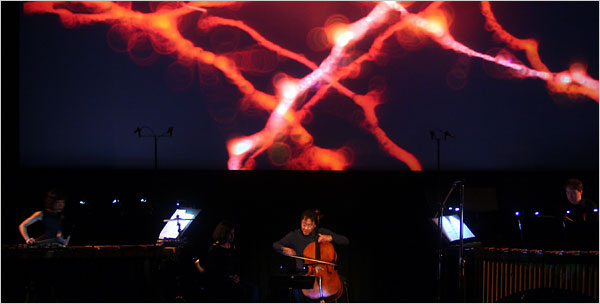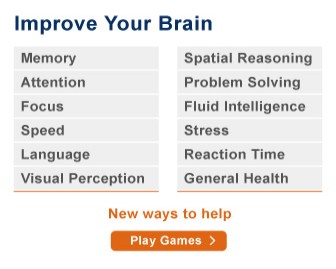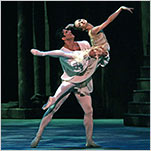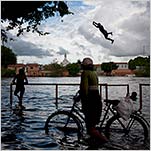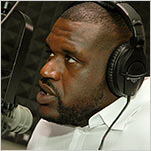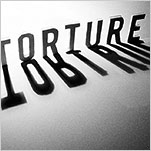Give the composer Bruce Adolphe credit for taking on the big issues. Inspired by the research and writings of the neuroscientist Antonio Damasio, who directs the Brain and Creativity Institute at the University of Southern California, Mr. Adolphe asked Mr. Damasio to collaborate on a work that would combine text, music and imagery of brain activity to evoke the evolution of the human mind. Mr. Adolphe also recruited Yo-Yo Ma, an old friend from his Juilliard School days, for the collaboration.
Blog

ArtsBeat
The latest on the arts, coverage of live events, critical reviews, multimedia extravaganzas and much more. Join the discussion.
Most composers would shy away from depicting the evolution of consciousness. Well, maybe not Mahler, who grappled with the afterlife in his “Resurrection” Symphony. Mr. Adolphe, who had already written two works based on Mr. Damasio’s writings, plunged right in.
The result was “Self Comes to Mind,” a 30-minute work for cello and two percussionists, with video imagery based on brain scans and with texts by Mr. Damasio. The piece had its premiere on Sunday night at the American Museum of Natural History. The 900-seat LeFrak Theater was packed for the event, which included an hourlong discussion with the collaborators.
Just how the human brain works remains one of the greatest mysteries in science. In his program note Mr. Adolphe suggests that music itself may be an expression of our physical minds, though, he adds, composing is never a matter of musical illustration, but of finding “technical and expressive parallels to extra-musical ideas.”
If anything, Mr. Adolphe is too deferential to the scientific concepts in this colorfully scored, skillfully written, though rather tame piece.
Mr. Damasio distilled his research into short poetic texts with elusive phrases like “When knowing began/it bloomed as quietly as mind first had.” He declined to read his words live in performance. So he recorded the texts, which were played as introductions to the three movements.
The cello is the protagonist in the piece. The first movement, “When Mind First (in the Body Bloomed),” opens with searching, elegiac cello lines that keep breaking into skittish flights, defiant of their tonal moorings. The excellent percussionists John Ferrari and Ayano Kataoka provided a background of melodic riffs and undulant patterns on marimba, vibraphone, chimes and other instruments.
The second movement, “Self Came to Mind,” is more animated, with sputtering percussion and fitful cello outbursts. The third movement, “Discovery,” is the most rhapsodic and volatile.
The visual element used brain scans from the research of Mr. Damasio’s wife, Hanna Damasio, also a professor of neuroscience at U.S.C. The images were folded into sound-reactive video compositions directed by Diego Miralles, based on an existing video by Ioana Uricaru. Even though the imagery was responding to the music, it was hard not to hear Mr. Adolphe’s obliging music as illustrative of the imagery.
The discussion, moderated by the author Jonah Lehrer, was fascinating, especially when, prodded by Mr. Ma, Mr. Damasio offered definitions of emotion, feeling, instinct, intuition — things that musicians deal with every day.
Mr. Ma said he had read Mr. Damasio’s books (which include “The Feeling of What Happens” and “Descartes’ Error”) and given them to friends for years. And from his astute questions and comments, this seemed no idle boast.


